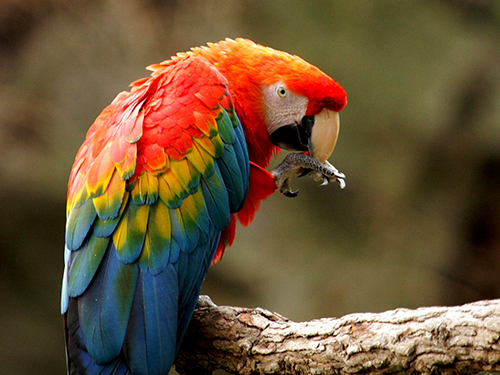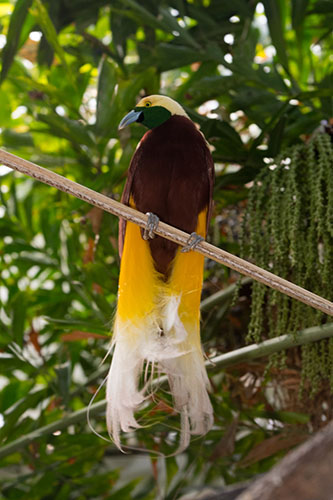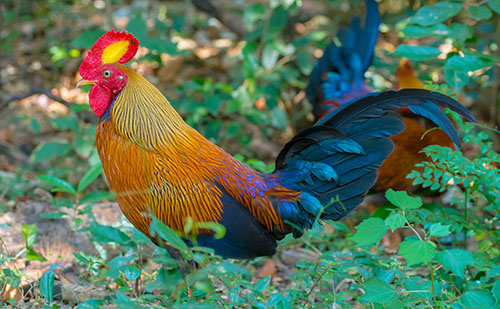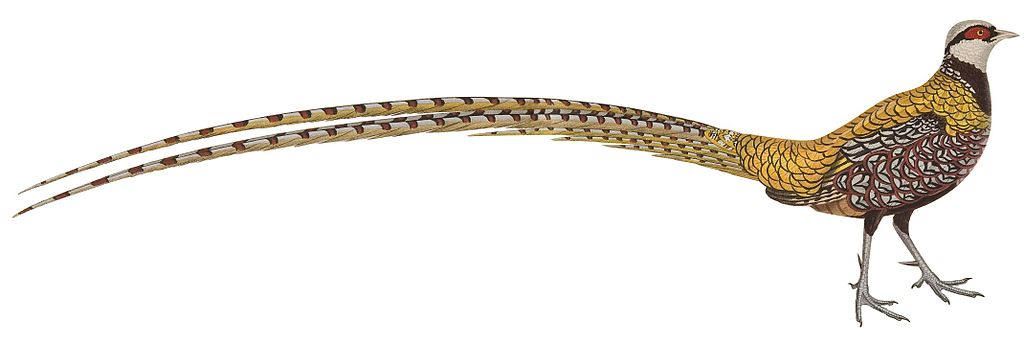Birds, Bright, and Beautiful
It is not only fine feathers that make fine birds.
~ Aesop
Parrots


Scarlet macaw (2008). Photo by Travis Isaacs
Parrots are among the most popular of birds, renowned as much for their intelligence as for their beauty. Most people are familiar with their ability to mimic human speech, but research has demonstrated that some may have the capacity for true language. Scientist Irene Pepperberg, for example, has suggested that parrots can learn the meanings of words and even the rules of language. Unfortunately for parrots, their charismatic nature has fueled an illegal pet trade that has contributed to declines in wild populations. The scarlet macaw is arguably the most impressive parrot – the species measures nearly 3 feet in length and is colored red, blue, green, and yellow. In 2009, researchers in Belize found that over 90% of scarlet macaw nests had been poached for baby birds.
Birds of Paradise


Lesser bird-of-paradise. Photo by Julie Larsen Maher © WCS.
The word paradise evokes visions of a wondrous tropical landscape often rooted in fantasy. A testament to their undeniably beauty, it seems the birds-of-paradise were appropriately named. With their colorful plumage, peculiar forms, and dramatic displays, they are unrivaled among birds in terms of pure spectacle. Numbering 38 species, the birds of paradise are almost exclusively found in the humid forests of New Guinea, a large island of the South Pacific.
They were first described by English naturalist Alfred Russell Wallace, a contemporary of Charles Darwin who contributed to his theory of evolution. Traditionally, many bird of paradise species feature prominently in the ceremonial dress of local tribes. During the late 19th century the demand for males’ plumes, which were used in Europe to decorate women’s hats, resulted in severe population declines.
Pheasants


Sri Lankan Jungelfowl. Photo by Saman527/Shutterstock.com.
Exploited for food, sport, and as ornamental possessions, pheasants have been closely linked with humans for thousands of years. Of the 150 species in this Asian bird family, the Indian peafowl is the best known, having been kept in royal gardens of both Eastern and Western cultures. However, the pheasant species with the greatest impact on human history is the red junglefowl. This ancestor of the chicken was domesticated at least five thousand years ago, likely somewhere in China. Many pheasant species are still quite common in aviculture, but their wild populations are declining rapidly. The Reeves’s pheasant, for example, is now listed as “vulnerable” due to habit loss and the overhunting of males to satisfy the demand for their tail feathers, which can grow to a remarkable 8 feet in length.


Unknown artist, Reeves’s pheasant (1838).
In Noveau Recueil de Planches Coloriées d’Oiseaux by C.J. Temminck.